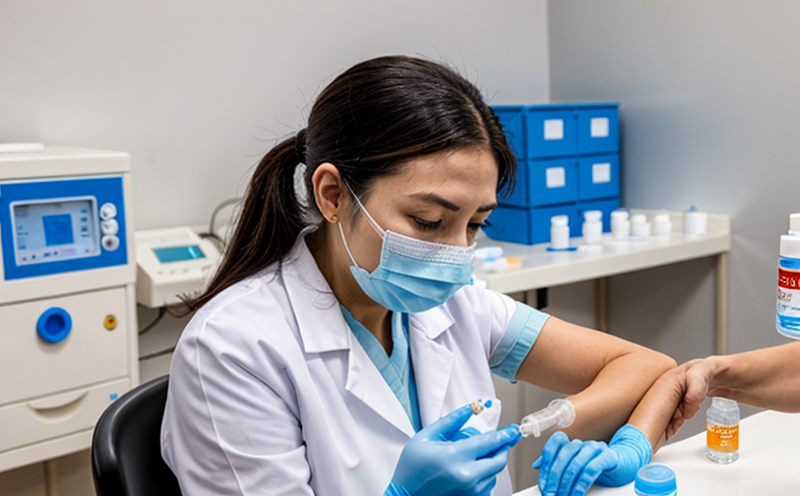WHO Potency Testing of Measles Vaccine
The World Health Organization (WHO) potency testing is a critical quality assurance process used to determine the biological activity of vaccines. This test ensures that the vaccine contains the expected amount of active ingredient necessary for an immune response. In the case of the measles vaccine, potency testing is crucial because it directly impacts public health outcomes. The test measures the concentration of live attenuated measles virus within the vaccine and compares it against the WHO standard potency specifications.
For accurate potency testing, laboratories must follow stringent protocols that adhere to international standards such as ISO 17025 for proficiency and precision. Compliance with these standards ensures reliability and consistency in test results. The process involves several key steps:
- Sample preparation: Dilution of the vaccine sample to known concentrations.
- Virus isolation: Growth of the measles virus from the diluted samples on susceptible cell lines.
- Dose titration: Determination of the dose required to achieve a defined response in laboratory animals or in vitro systems.
- Validation and reporting: Comparative analysis with WHO reference standards, followed by detailed report generation.
The test is performed using specialized equipment such as microtiter plates for cell culture, incubators, and biosafety cabinets. The results are reported in terms of the number of plaque-forming units (PFU) per dose or the geometric mean titer (GMT).
| Sample Preparation | Virus Isolation | Dose Titration | Validation and Reporting |
|---|---|---|---|
| Dilution of the vaccine to known concentrations. | Growth of measles virus on susceptible cell lines. | Determination of dose required for defined response. | Comparative analysis with WHO reference standards, detailed report generation. |
The importance of this testing cannot be overstated. It ensures that healthcare providers and governments can trust the efficacy of the vaccine they are administering to protect populations from measles outbreaks. Compliance with WHO specifications is essential for maintaining global health standards and facilitating international vaccine distribution programs.
Benefits
The benefits of WHO potency testing extend beyond ensuring individual patient safety; it also supports broader public health goals by:
- Ensuring consistent and reliable vaccine efficacy across different batches.
- Providing data to optimize production processes for vaccine manufacturers.
- Promoting trust in the regulatory framework and international cooperation on vaccine safety.
- Aiding in the rapid response to public health emergencies, such as measles outbreaks.
In addition to these direct benefits, compliance with WHO standards enhances a laboratory’s reputation for excellence. This can lead to increased business opportunities and collaboration with global health organizations.
Industry Applications
The WHO potency testing of measles vaccines is widely used in pharmaceutical companies, government agencies, and international health organizations. Here are some key applications:
- Vaccine manufacturers: To ensure that each batch meets the required standards before release.
- Regulatory bodies: To verify compliance with WHO recommendations and ensure public safety.
- National health services: For monitoring vaccine efficacy across different regions.
A table highlighting the applications of this testing is provided below:
| Application | Description |
|---|---|
| Vaccine Manufacturers | To ensure that each batch meets the required standards before release. |
| Regulatory Bodies | To verify compliance with WHO recommendations and ensure public safety. |
| National Health Services | For monitoring vaccine efficacy across different regions. |
Quality and Reliability Assurance
Quality and reliability assurance in WHO potency testing are paramount. Here are some critical aspects:
- Use of certified reference standards: Ensures comparability across different laboratories.
- Standard operating procedures (SOPs): Provide clear guidelines for each step of the process.
- Regular calibration and validation of equipment: Maintains accuracy throughout testing.
- Training and certification of personnel: Ensures proficiency in conducting the tests correctly.
- Auditing and quality control checks: Identify and rectify any discrepancies promptly.
The reliability of the test results is crucial for maintaining public trust. By adhering to these practices, laboratories can ensure that their testing meets the highest standards.





